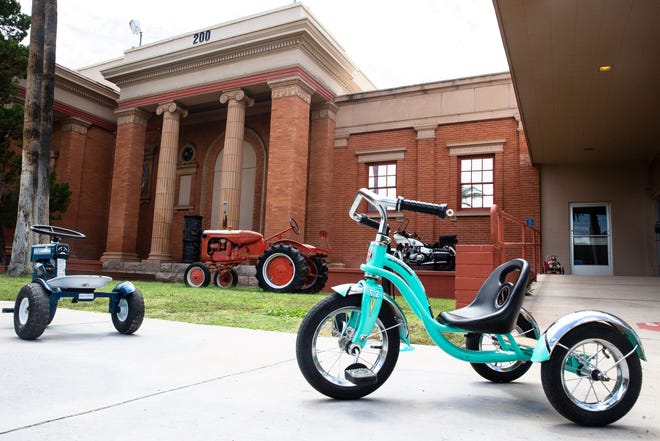Most people likely think of our historic buildings when we consider our historic Armory Park neighborhood. That's especially true for us more recent arrivals who have not observed the community over many years. The stories of our people bring the neighborhood to life by adding context and color to the physical structures. Small stories like Julieta's below are always welcome. -Ken
I have lived no more than two miles from Stone and Congress all my life. I was born at the Stork’s Nest 86 years ago. The Stork’s Nest was a small maternity hospital on North Court Avenue that closed in the early 40s. The building is still there.
Where I lived for 12 years the house still stands next to the Temple of Music and Art on Scott Avenue. Living there I saw a busy, happy downtown.
Then it died. When it started to come alive. I was so happy.
We went home for lunch every day while in elementary. Took sandwiches for my junior high lunch hour, until a family with the last name of *Orozco, constructed a food stand in front of their house on 12th Street across from Armory Park. We would buy our hot dogs or hamburgers, then go to the park and enjoy our lunch.
My playmates and fellow school classmates lived here in Armory Park. This was my playground after being in school all day. I attended the Safford elementary and junior high schools from first grade through the ninth grade.
The train whistles don’t bother me in the least bit. Now I live one block away from the railroad tracks by Barrio Brewery. I’m sorry and feel for those who are bothered by the blaring sounds from the trains. It must be difficult to be hearing them when trying to get a good night's sleep. The sounds help me go to sleep.
Regarding this past weekend’s festival at the Jácomes Plaza. It was wonderful that it was moved away from Armory Park. In 2003 we moved from Menlo Park to East 16th Street. I expected my new neighborhood to be somewhat noisy being that we would be in the downtown area.
That’s all for now. Happy good night,
Julieta Bustamante Portillo
Bright yellow house named “Casita Sol”
*Señor Jacinto Orozco, owner of the food stand, was Tucson’s first Spanish broadcaster. He had one, two hours (I really don’t remember the hours.) every weekday on KVOA, I think. It was an afternoon program. He would announce who in the Mexican community had died. I mainly remember that he played beautiful Mexican music. When I was three and four years I would dance to the music in our small living room. More happy memories.
This story was published on the Armory Park listserv on November 15th, 2021. Thanks Julieta

